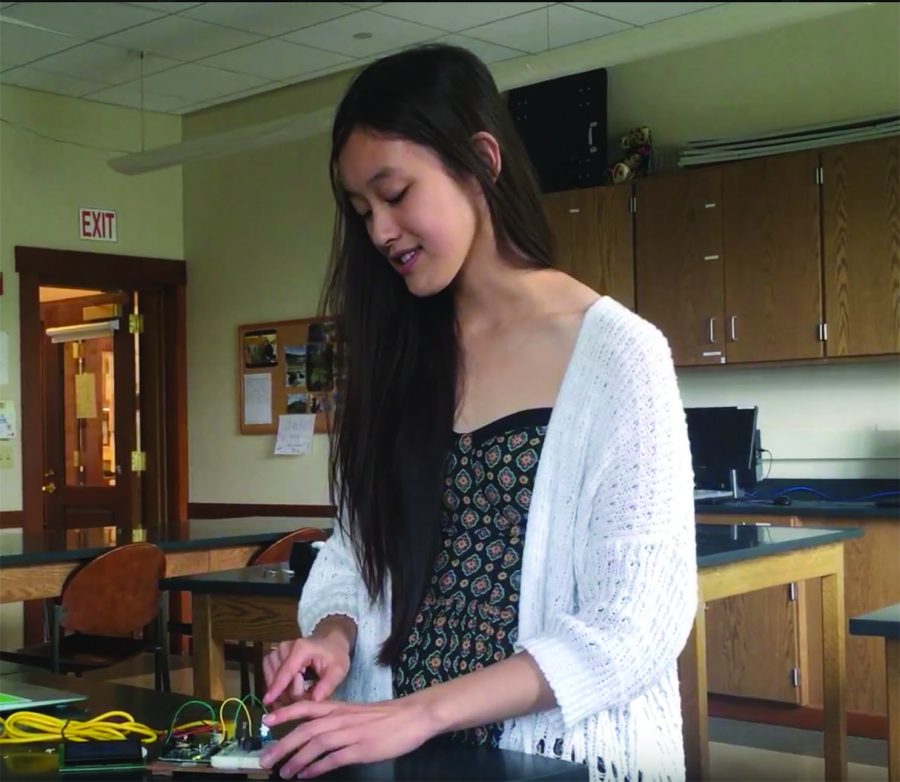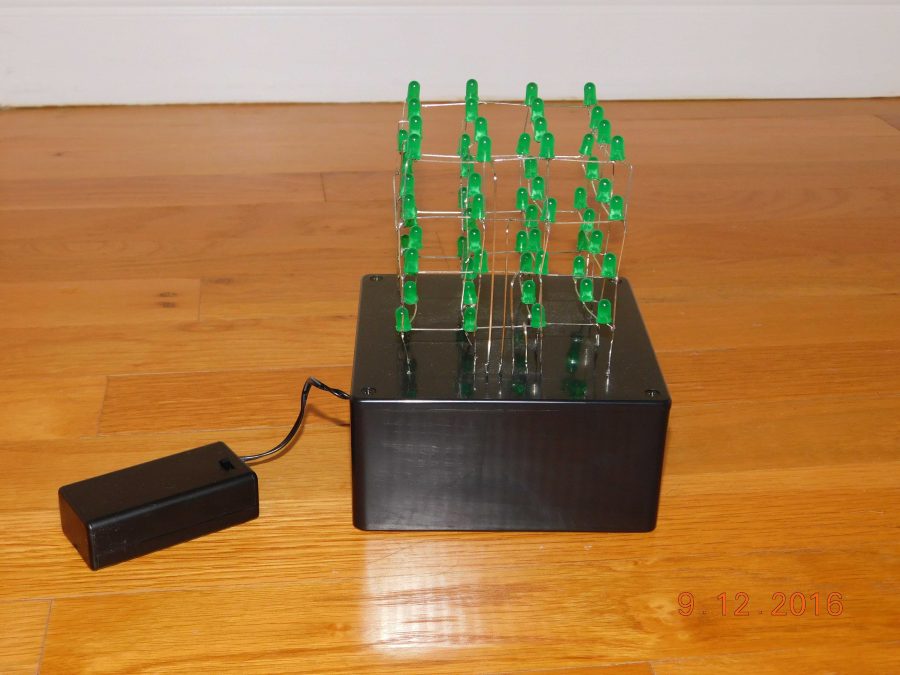Physics and coding collide at Hackley summer camp
Credit: Andrew Ying
Freshman Kellsie Shan operates a light theremin that makes sound based on different movements.
September 23, 2016
Summer is usually thought of as a time to relax and unwind, a time to take a break from schoolwork. However four freshmen decided to surrender time at the beach for physics and coding at the Introduction to Engineering Electronics Course. This camp, taught by physics teachers Seth Karpinski and Andrew Ying, is a two-week program focused on providing hands-on experience coding and building machines.
The course is a great introduction to both engineering and computer science, creating a new, interdisciplinary way to look at science. “Dr. Ying and I both have engineering degrees and he does quite a fair amount of programming on the side. Our goal was to integrate that into the curriculum because in our regular classes we have computer science classes and physics classes, but we don’t have engineering, which really branches the two” said Mr. Karpinski.
Throughout the camp, Hackley freshmen learned the basics of coding, how to build machines, and how to use that code to program the machines to do different things. To do so, the students used a device called an Arduino board, which Dr. Ying described as “a really cool device that essentially is a mini-computer that can be connected to little electronics like LED lights, dials, motors, and LED displays.” Using code that the students learned to write in the course, the Arduino board could perform many different tasks.
The camp culminated in individual projects which each student came up with and completed on their own.Kellsie Shan built a cardboard and aluminum touch-capacitive keyboard that would then play notes in any key, Oren Tirschwell created a LED cube that made a 3D light show, Gabe Baez made a LED clock that played pong- a 2D tennis game that was one of the first video games, and Sam Perlman constructed a machine that wrote and translated Morse code.
The number of students in the camp was purposely kept small so each student could explore the different abilities of the Arduino board that they were interested in and had the support from Mr. Karpinski and Dr. Ying to realize their ideas. “If we had ten it would not be that interesting; we couldn’t spend the extra time helping them troubleshoot a cool idea they had, just because it takes a lot of time to troubleshoot like that,” Mr. Karpinski said.
The students who participated in the camp really enjoyed it; Sam Perlman said, “I ended up working on a machine that turned button inputs in Morse code into words on a LCD screen. I had never gotten the chance to program through these kinds of peripherals, so I really tried to make this machine as advanced as I could. The highlight for me was when it began to work. It hadn’t been working correctly or fully the entire week, so that last moment when it began doing what I wanted it to do was great.”
Mr. Karpinski’s favorite part of the camp was watching the students use the skills they were taught at the beginning of the course to come up with a project of their own, while Dr. Ying liked the ways the students were able to troubleshoot those ideas. “Oh, and I guess working with Karpinski…he’s an awesome teacher,” he added.


